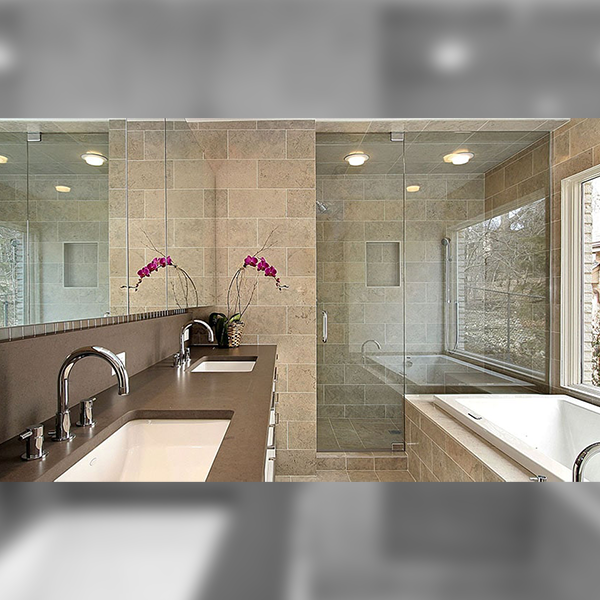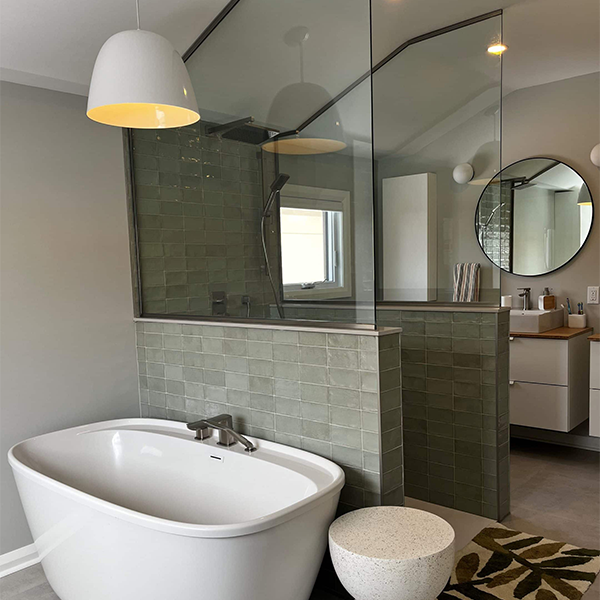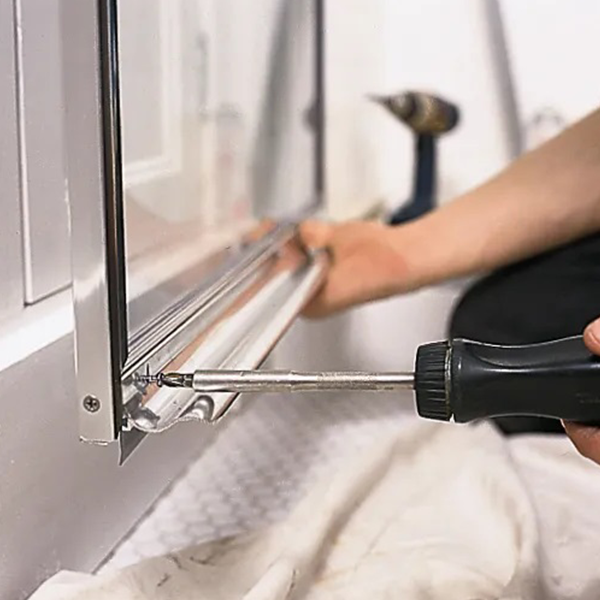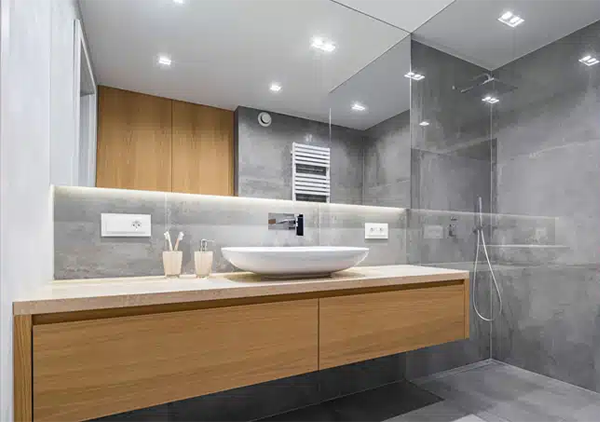Planning Your New Shower Project
Centennial Glass specializes in bringing bathroom reno dreams to life with expertly installed custom glass shower enclosures and accessories.



Planning Your New Shower Project
A Skilled Member of Your Renovation Team
Centennial Glass specializes in bringing bathroom reno dreams to life with expertly installed custom glass shower enclosures and accessories.
Centennial estimators and installers work with you or your general contractor/renovator who is responsible for providing drawings, prepping the area, and determining ETA for when Centennial can visit to complete the final estimate, then perform the actual shower installation.


Basic Project Planning Steps
1. Know the Dimensions of your Shower – This can be as simple as a width and height for a new sliding bath door, or a technical drawing of an inline swing door with half panes and multiple notched panels. Either way, a drawing needs to be developed as the first step in the process.
2. Determine Components and Provide Details – Use Centennial’s Shower Design Tool to assemble measurements and select glass type, thickness, treatment option, and hardware components (you can also attach your shower diagram for upload).
3. Discuss Options and Determine Costs – Once received, Centennial will call to confirm specs, provide options, then provide a preliminary quote within 24 to 48 hours (drawing provided) or longer if a drawing must be prepared by one of our staff (turn around time depends on complexity).
4. Determine Completion ETA for Shower Area Reno – Once your renovator has finished the shower base, walls, tiling and grouting, a Centennial Estimator (48 hours booking required) will visit to ensure surfaces are square and level, inspect the sill angle, take final measurements, then provide you with a final quote on the spot or within 24 to 48 hours.
5. Make Deposit, Order Components and Book installation – A 75% deposit is required for Centennial to generate a work order. Depending on the complexity of the shower components (cut outs, hardware selection, etc.) it then takes approximately 2-3 weeks to receive all components and complete the installation.
Workmanship Guarantee
Quality workmanship is job #1. In the unlikely event you experience a problem with your new custom installed shower, we promise to cover all labour and product warranty claims involved in making it right.
Centennial is the only glass company in Ottawa that guarantees its workmanship on custom glass shower installations for two years* so if there is a problem, simply call us and maintenance appointment will be scheduled at the first available opportunity.
*See warranty section for complete details

General Guidelines for Heavy Glass Showers
The following are general guidelines to help you prepare for a safe and cost-effective heavy glass shower installation.
Doors and Hinges
Every door hinge has a manufacturer required weight and width restriction. For example, a pair of “Geneva” style hinges have a maximum door width of 28″ and a maximum door weight of 80lbs. “Vienna” style hinges have a maximum door width of 36″ and a maximum door weight of 110lbs.
Wall Mounted Door Hinges
Manufacturers require hinges to be fastened through the tile and into wood blocking. We recommend that solid wood blocking be installed vertically at least to the top of the enclosure and to the full width of the sill. The wall where the hinges are to be mounted must be straight so the pivot point of all hinges are aligned. The wall does not have to be plumb but it must be straight.
Hinges Mounted Off Sidelites
A door can be hinged off of a fixed sidelite panel that is not supported at the top when the fixed panel is 1/2″ thick and is 22″ wide or less. The sidelite must also have hinge-sized L-shaped wall clamps at the same height as the hinges otherwise the panel must either be secured to the ceiling or secured with a header bar.
Glass Sidelites
For safety reasons, all sidelites must be mechanically fastened in the opening using channels or clamps.
Sills
The sill or curb must be pitched into the shower for water to drain properly. If the sill is near level or slopes only slightly, the shower enclosure will leak unless a threshold is used to try and create a dam. Remember to remove shipping bars from solid sills and fill the void with thin set to avoid cracking the sill when it’s drilled. Corner enclosures should use standard angles of 90 degrees or 135 degrees if possible. Other angles are possible but will typically be more expensive.
Buttress Wall
The face of the buttress wall should always be at 90 degrees to the sill. Angles other than 90 degrees are always more difficult to enclose. In a door opening, the buttress wall must be plumb so the door will align to the glass panel sitting on top of the buttress, otherwise the panel must be notched and extended down to the sill to provide a plumb vertical joint to the door, as well as also reducing the opening width available for the door.
Seats or Benches
Seats inside shower enclosures should slope downwards towards the shower base for water runoff and panning should be used to prevent water leakage through the tile.
Soffits
The footprint of the sill should exactly mirror the footprint of the soffit. Plumb down to ensure that they are the same. If are not, it will be extremely difficult to align the reveal of the glass to the sill and soffit and the final product will look awful.
Tub DoorSteam Units
Whenever showers are enclosed from sill to soffit, a steam enclosure is created whether you want one or not. Consider an operating pivoting transom above the door or at a sidelite to vent excess steam. In these instances we strongly recommend a fan be installed inside the shower enclosure. The ceiling must be tiled and should extend past the edge of the enclosure.
Panel Sizes
Never design an enclosure with glass panels narrower than 4″ wide. The minimum width of tempered glass is 4″. The maximum size of a glass panel depends on the accessibility to the shower enclosure (narrow spaces, low ceilings, etc.).
Raised Decorative Tiles
If a door is being mounting on a wall with raised tiles, tiles must be notched or flat tiles installed for the entire door swing area wherever the decorative tile comes into contact with the glass. For fixed glass panels butting to raised tiles, you should notch the tile slightly wider than the thickness of the panel.
Leaks
Reality is no shower enclosure is completely water proof. The smaller the shower space and closer the shower head is to moving parts such as swing doors or moving panels, the greater the chance that water will find its way over or around the moving parts. Water may also end up on the floor when the sill is not pitched sufficiently or where walls abutting a door bow away from or into the door. As a general rule, shower heads and body sprays should never be designed to face the door.

